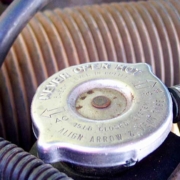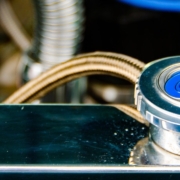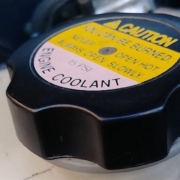NAPA Know How: Which Is Safest for Your Car?NAPA Know How Blog
[ad_1]
Have you had the internal debate water vs. antifreeze for your car’s cooling system? Depending on where you live, the choice may have already been made for you by the weather you’re forced to deal with. Cold winters mean antifreeze is necessary to keep your engine from icing up internally. In the summer months, however, and in warmer climates, it’s not always so clear cut.
Different Boiling Points
The water in your car’s cooling system is charged with maintaining a steady operating temperature that hovers within the most efficient range for generating power and making efficient use of fuel. Water boils at 212 degrees Fahrenheit, but that’s only if it’s pure, distilled water that’s free from contaminants and minerals that can lower that boiling point substantially.
Most antifreeze is based on ethylene glycol, a form of alcohol that features a boiling point of 387 degrees Fahrenheit. Obviously, your engine won’t ever reach that temperature during normal operation, but the lower boiling point of water vs. antifreeze means that there’s a higher chance of steam forming inside your cooling system, which considerably reduces efficiency and could cause your engine temp to spike in an extreme situation.
Corrosion Is an Issue
Another issue when comparing water vs. antifreeze is corrosion. Remember those mineral deposits mentioned above? Over time, if you use tap water inside your car’s radiator the deposit build-up can seriously impact its operation. Mineral-free distilled water is a safer bet, but you still run into the problem of rust and corrosion forming on metal cooling system components. Antifreeze gets around this issue, as the ethylene glycol does not corrode most metals, providing a protective coating that will extend the life of your engine even during harsh, hot weather. It also contains additives that work specifically to prevent corrosion from taking place, and sometimes your engine might call for a specific type of antifreeze to make sure the necessary additives are used.
Mix It Up
What’s the best solution when deciding between water vs. antifreeze for your car’s cooling system? Try using both. A 50/50 mix of antifreeze and water is the most commonly used coolant in modern automobiles. The high boiling point of antifreeze plus its anti-corrosion additives are a good complement to water’s natural cooling capabilities (as long as its distilled water). Plus, there’s the added benefit of not having to worry about a sudden cold-snap freezing up your engine.
Choosing the right coolant for your car is crucial for its long-term health, with some information to help you make the right choice, you can safely purchase the right products for your vehicle.
Check out all the chemical products
Photo courtesy of Morguefile.













